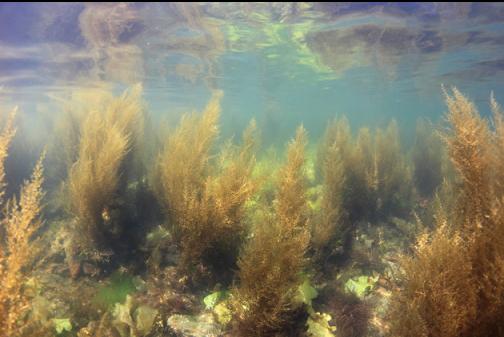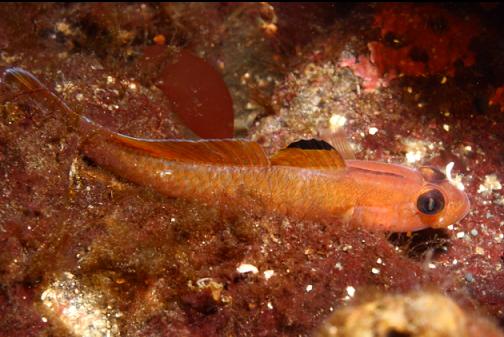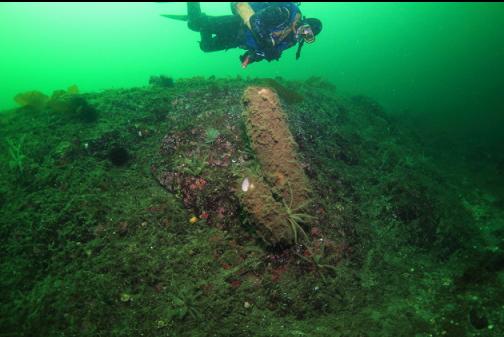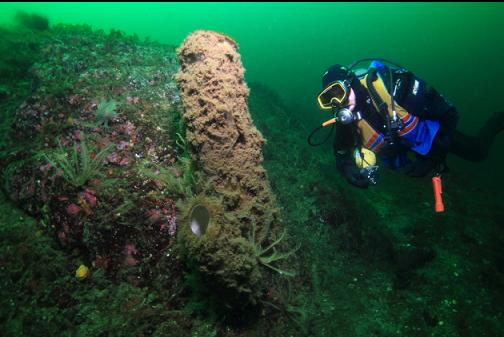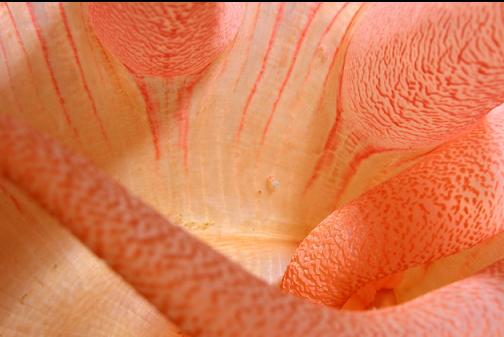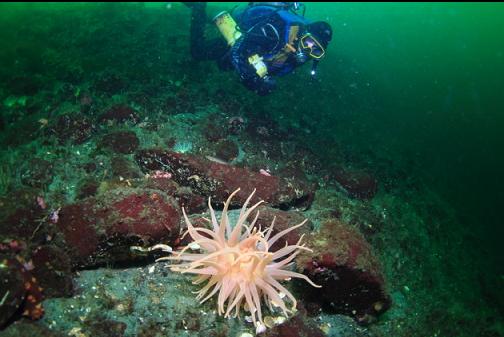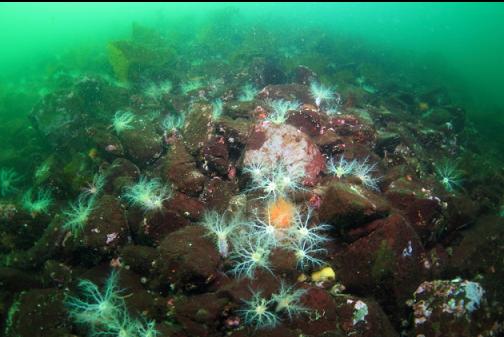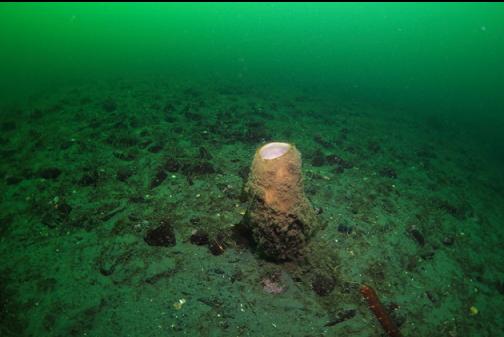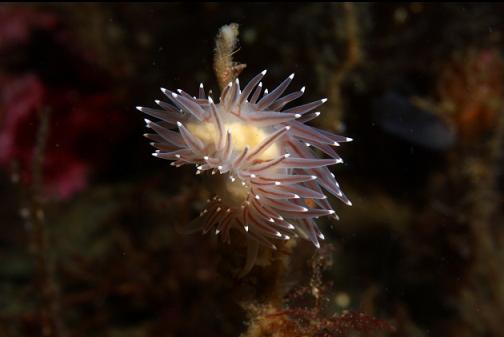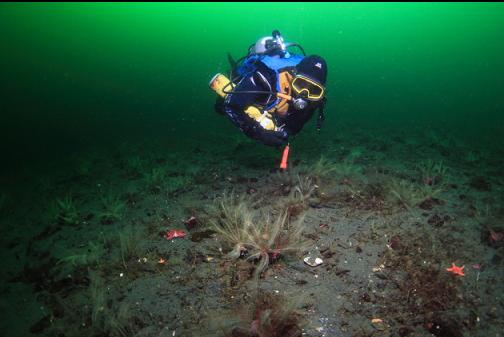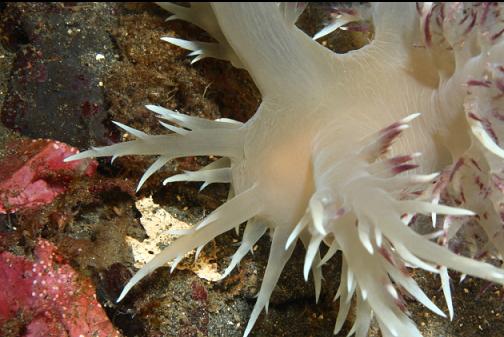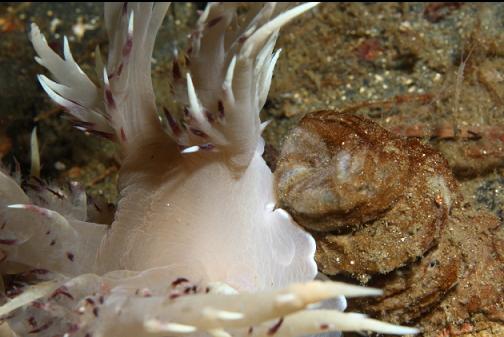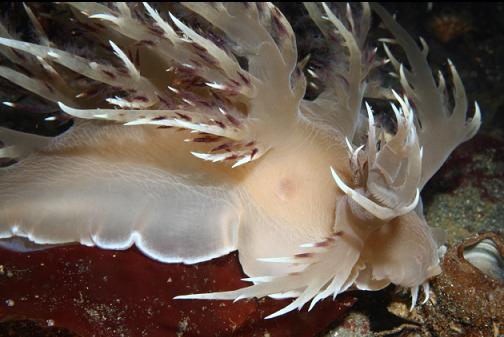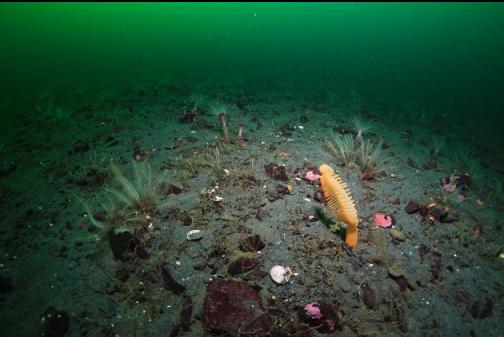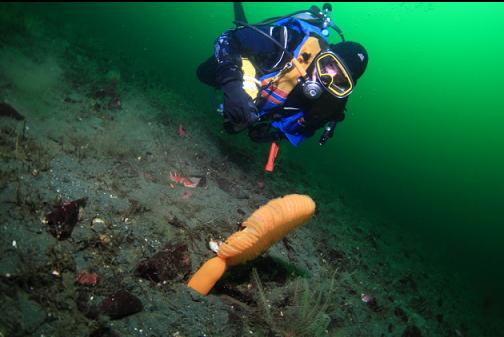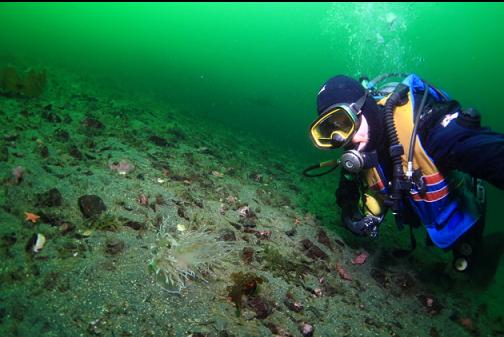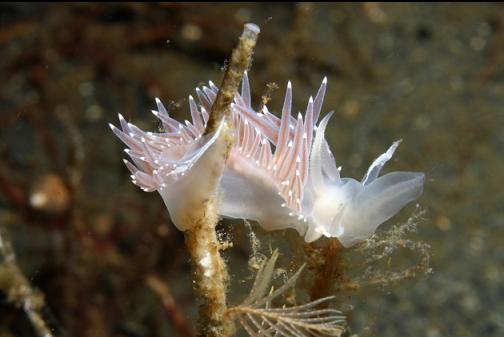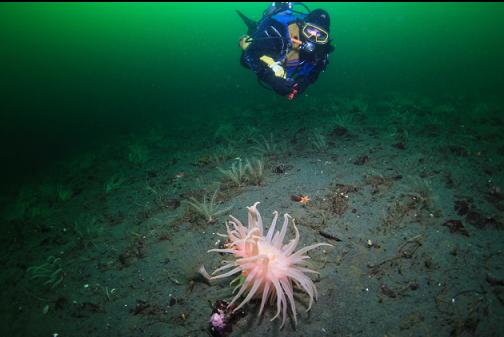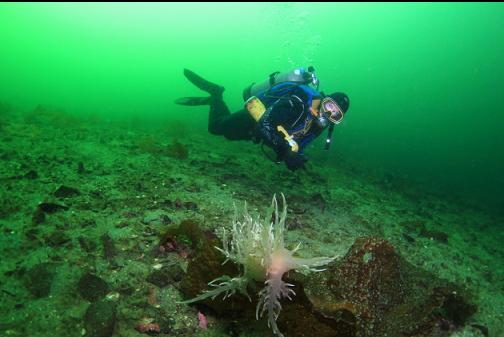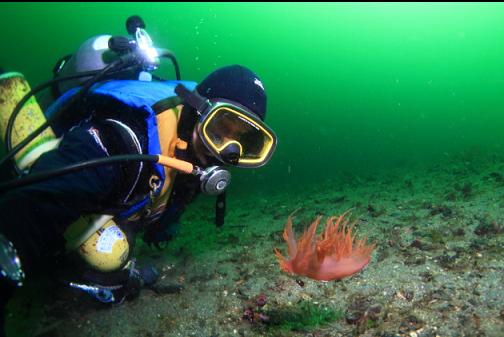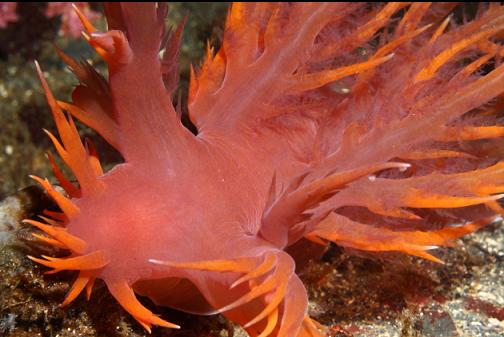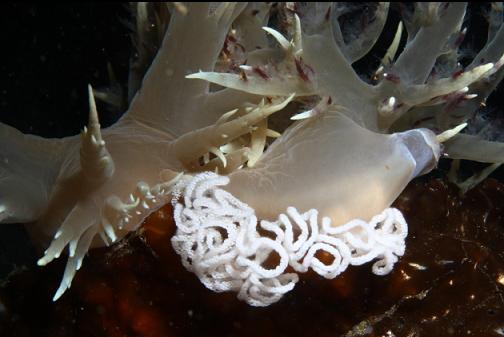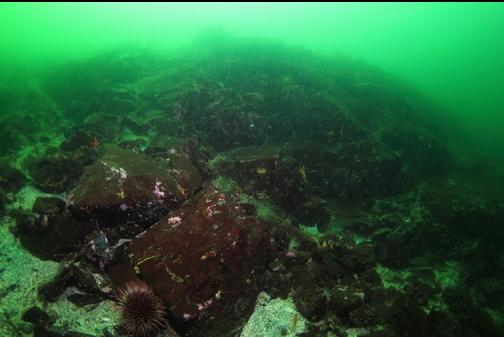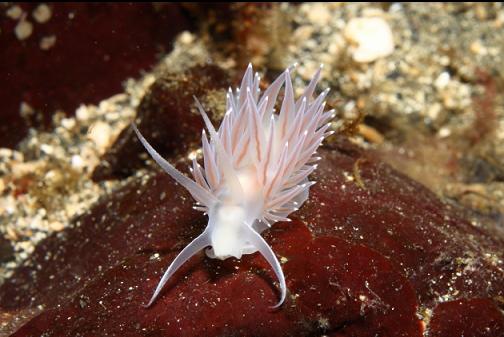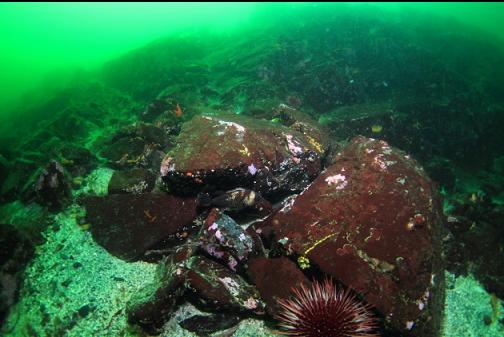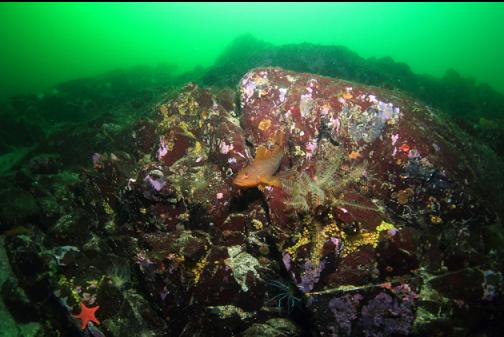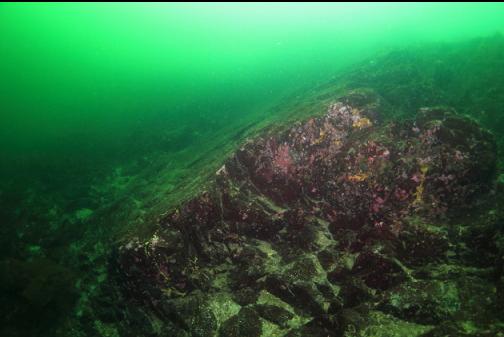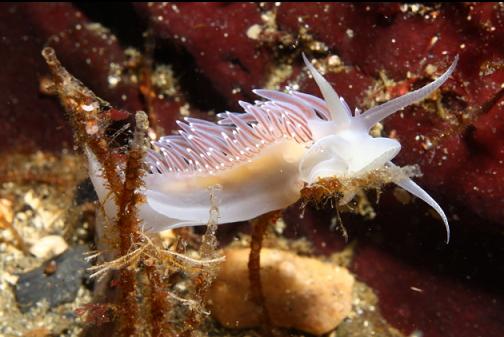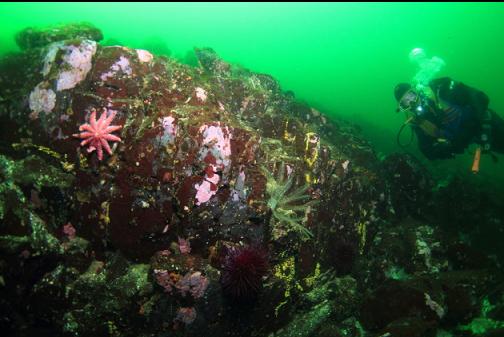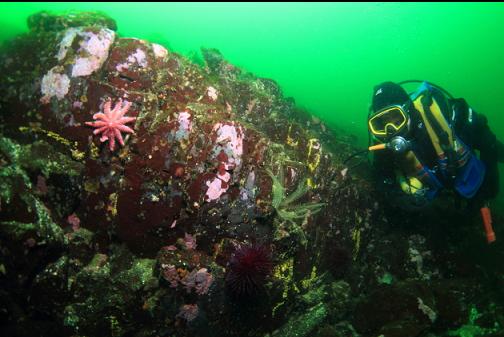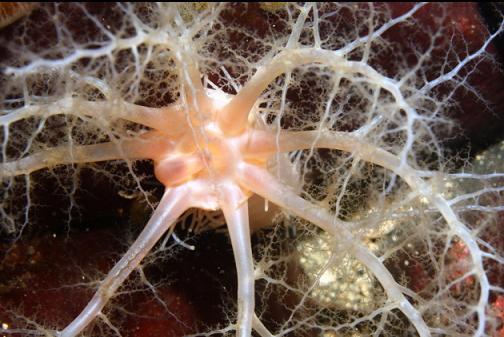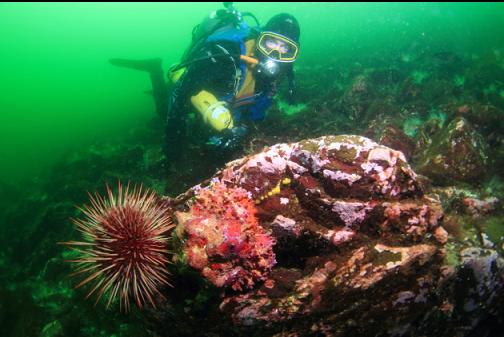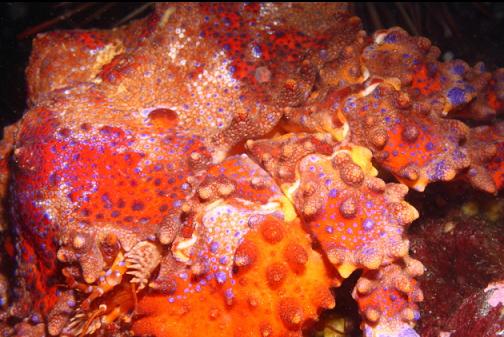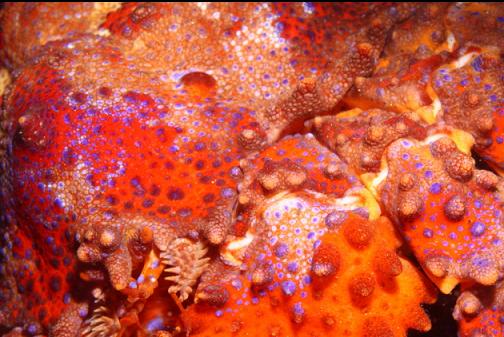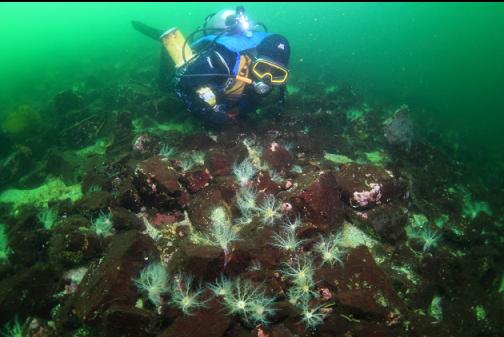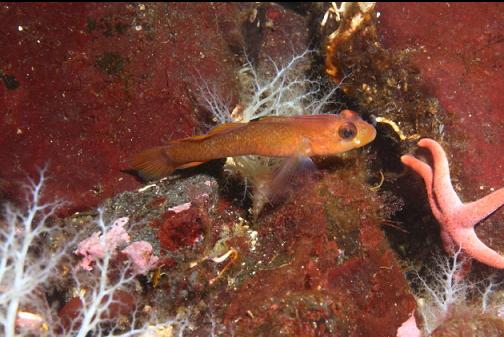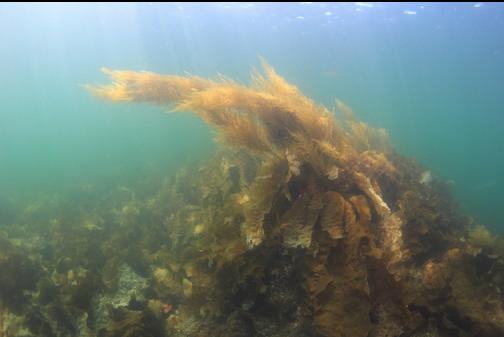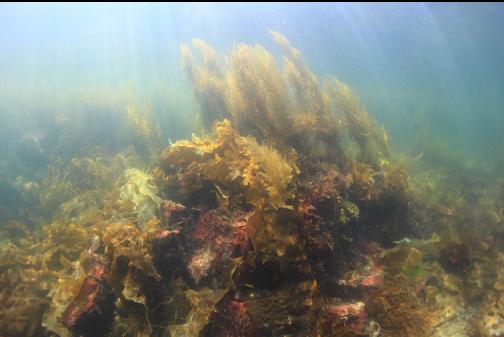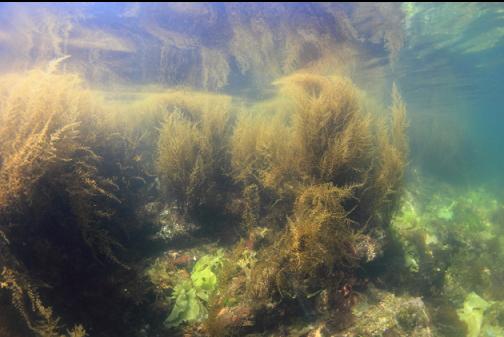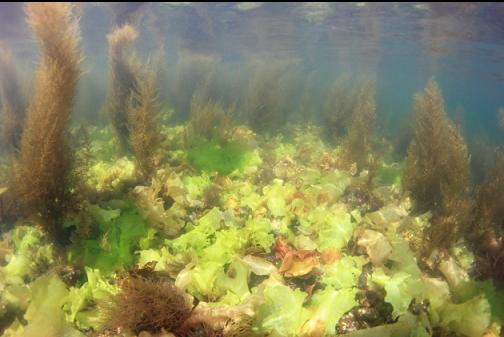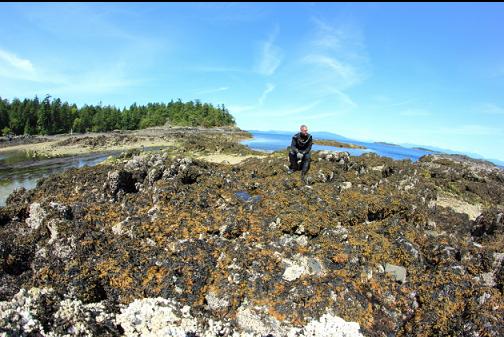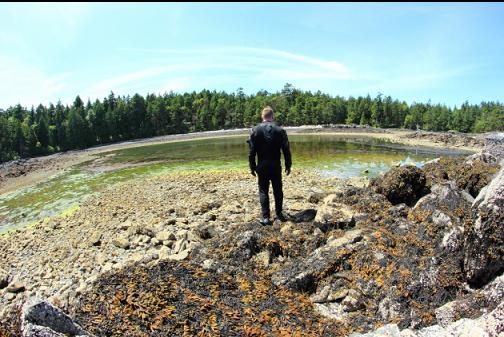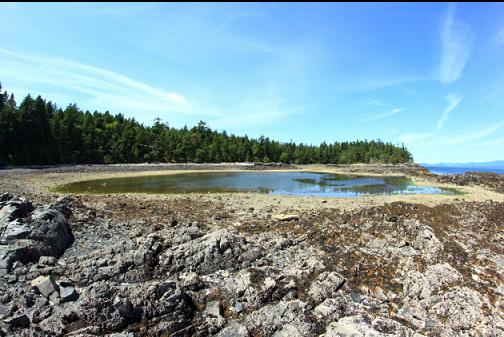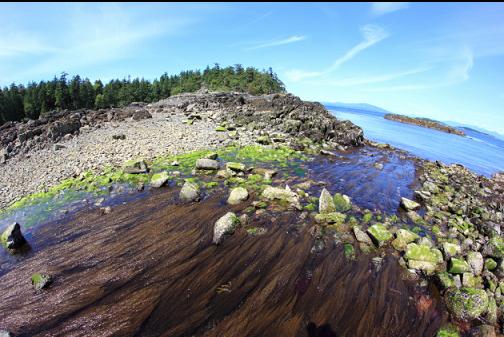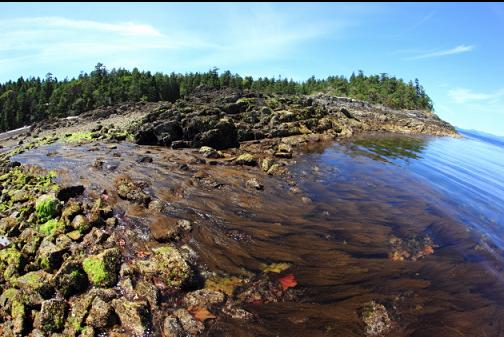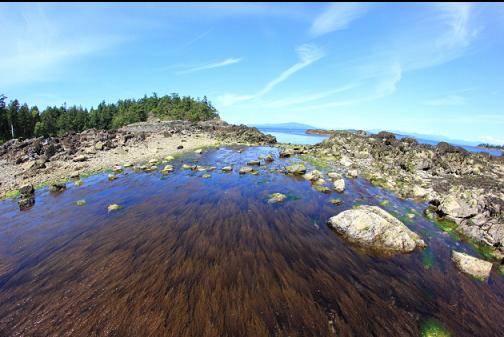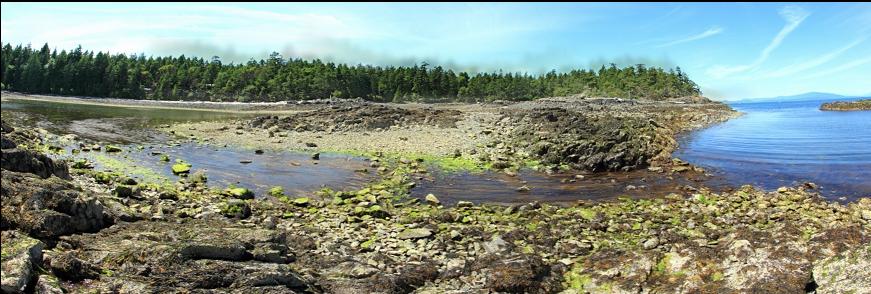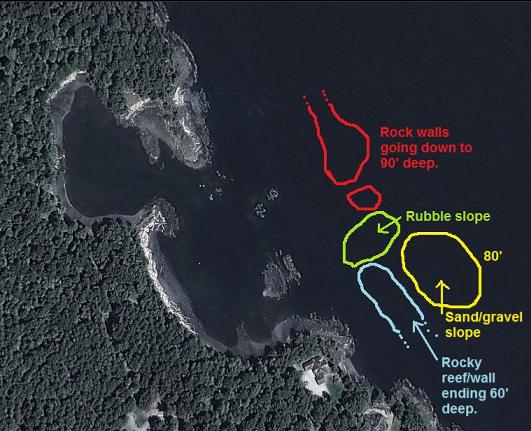I drove up to the Nanoose area on June 5, 2015, intending to do a couple of name-brand dives (Madrona Point and Dolphin Beach). I had checked the tide table before I left so I knew the tide would be too low to be able to easily get to the water at Moorecroft Park. Against my better judgement, I decided to drive down to Moorecroft Park anyway to see what the water level actually looked like in the small bay. It didn't look too bad. The bay was still full of water and the line of reefs blocking the entrance to the bay was still submerged, making me think that it would still be possible to swim all the way out of the bay. By the time I made it down to the shore with all my gear, the tide had noticeably dropped. As I was putting on my mask, the strap broke, so there was a further delay as I went back up to the parking lot for my spare mask. By now, the line of reefs at the entrance to the bay was exposed and the bay had become a lake cut off from the ocean. Normally, the effort of getting to the water at this low of a tide wouldn't be worth it for me, but I was already down at the beach with all my dive gear so I staggered through the knee-deep bay and climbed over the rocks blocking the entrance to the bay. It was a hot, sunny day and this is not something I want to do again in a drysuit while carrying 100 lbs of gear. I swam down the slope and headed to the right to explore an area I've never been to before. Visibility in the shallows was 20'. There was a thermocline at 20' deep and the water became colder and clearer (maybe 30-40' visibility). The bottom was a slope of rocky rubble covered with white burrowing cucumbers. This changed to mostly sand below 60 feet or so. At 75' deep, I headed straight to the right (South) to look for rocky reefs or walls. There were lots of feather stars on the sand and a few crimson anemones, sea pens and boot sponges. There were also lots of giant nudibranchs. I swam for quite a while and I didn't see any solid, rocky areas in the 70-80' depths. I swam back up shallower and found a large, steep rocky reef that bottomed out at 60' deep. There were a few quillback rockfish and kelp greenlings here. I saw a medium-sized Puget Sound king crab. When I swam back up to the bay, the tide had dropped even further. The bay was now only a foot or two deep. The surface of this shallow "lake" was a few feet above the surface of the outside ocean and a small river flowed down, continuing to drain the bay. I made a couple of sweaty trips carrying my gear back to the shore over the loose, slippery rocks and understood why nobody else dives here.


